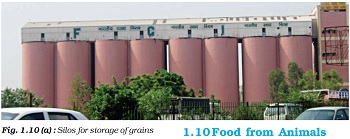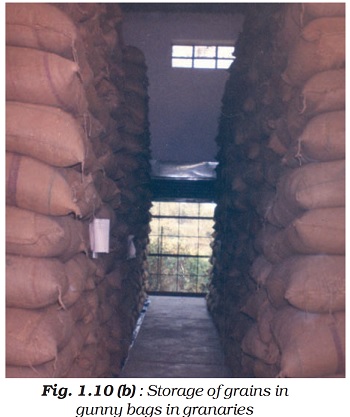1.9 Storage
NCERT Class 8 Science Textbook for Blind Students made Screen Readable by Dr T K Bansal.
Storage of produce is an important task. If the harvested grains are to be kept for longer time, they should be safe from moisture, insects, rats and microorganisms. Harvested grains have more moisture. If freshly harvested grains (seeds) are stored without drying, they may get spoilt or attacked by organisms, making them unfit for use or for germination. Hence, before storing them, the grains are properly dried in the sun to reduce the moisture in them. This prevents the attack by insect pests, bacteria and fungi.
"I saw my mother putting some dried neem leaves in an iron drum containing wheat. I wonder why?"
Figure 1.10(a) : Silos for storage of grains

Figure 1.10 (b) : Storage of grains in gunny bags in granaries

Farmers store grains in jute bags or metallic bins. However, large scale storage of grains is done in silos and granaries to protect them from pests like rats and insects [Figure 1.10 (a) and (b)].
Dried neem leaves are used for storing food grains at home. For storing large quantities of grains in big godowns, specific chemical treatments are required to protect them from pests and microorganisms.
